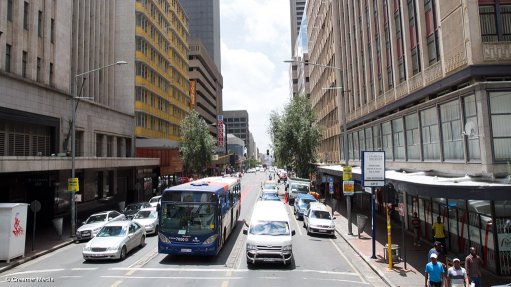
RICE TAG The real costs of operating Rea Vaya have become clear
Photo by: Duane Daws
Phase 1A of Johannesburg’s Rea Vaya bus rapid transit (BRT) system should carry around 42 000 people a day, while it was been expected that Phase 1B, rolled out last year, would add another 60 000 daily passengers.
However, the entire system is currently carrying only 35 000 people per weekday on average, says Rea Vaya finance and administration director Brendan Petersen.
“This is much lower than anticipated”, and is “not economically efficient” when considering only the transport benefits, and not the social benefits.
If one looks at the time period November 2013 to June 2014, the Gautrain transported 48 000 people on average on a weekday, with minibus taxis moving one-million passengers a day, said Petersen.
“Are we getting value for our money?”
Government invested around R4-billion in the Rea Vaya bus system to date.
Petersen says it is important to consider a num-ber of questions, through a sustainability study, before the planned roll-out of Phase 1C in 2017.
The original objectives of the Rea Vaya system were to provide a fast, safe and reliable public transport system; formalise the minibus taxi industry through its participation in Rea Vaya; ensure spatial restructuring and integration, with the poor able to move around the city, ensuring a shift to public transport; mitigate climate change; and ensure Johannesburg became a more competitive city.
However, certain challenges have emerged in the operation of phase 1A and 1B.
For one, the real costs of operating Rea Vaya have become clear, says Petersen.
For example, the costs of station and travel-way maintenance are high, as is the price tag on staffing the stations, fuelled by passengers’ secu-rity concerns.
The city also realises that the system will need operational subsidies for most of the 12-year operating contracts.
The cost of automatic fare collection is high, while it has also become clear that the stations are not “fare-evasion proof”, notes Petersen.
The introduction of a bank-based card as a payment method, with loading fees, saw a “significant reduction” in passenger numbers, says Petersen. However, some of these passengers have now returned to the system, he adds.
“Our passengers are very sensitive to any small fare increases.”
Fare evasion took place when passengers left the station in free flow. Now, however, passengers tap their cards through a turnstile to leave, similar to the situation when they enter the station.
Strikes also see passengers leaving the system, returning only two . . . three months later.
The sustainability study on Phase 1C investi-gated a few scenarios, Petersen explains.
It considered not building Phase 1C; rolling out a BRT system similar to Phase 1A and 1B; improving and extending Phase 1C; or moving to light rail.
A number of indicators were considered, such as safety, basic accessibility, system efficiency, security, economic viability, resource con-sumption and air quality.
The city asked how operating costs could be covered by fare revenue, says Petersen, also considering options such as advertising at the stations.
The outcome of the study is that Phase 1C should be improved and extended beyond the scope of the original planning.
The original plan was for Phase 1C to go to Alexandra and Sandton. However, the extended Phase 1C will now go to Ivory Park, Midrand, Sunninghill and pos- sibly Randburg, in an effort to secure more passengers.
It is expected that the new extended Phase 1C could add 200 000 passengers a day.
Petersen expects Phase 1C to start operations in early 2017.